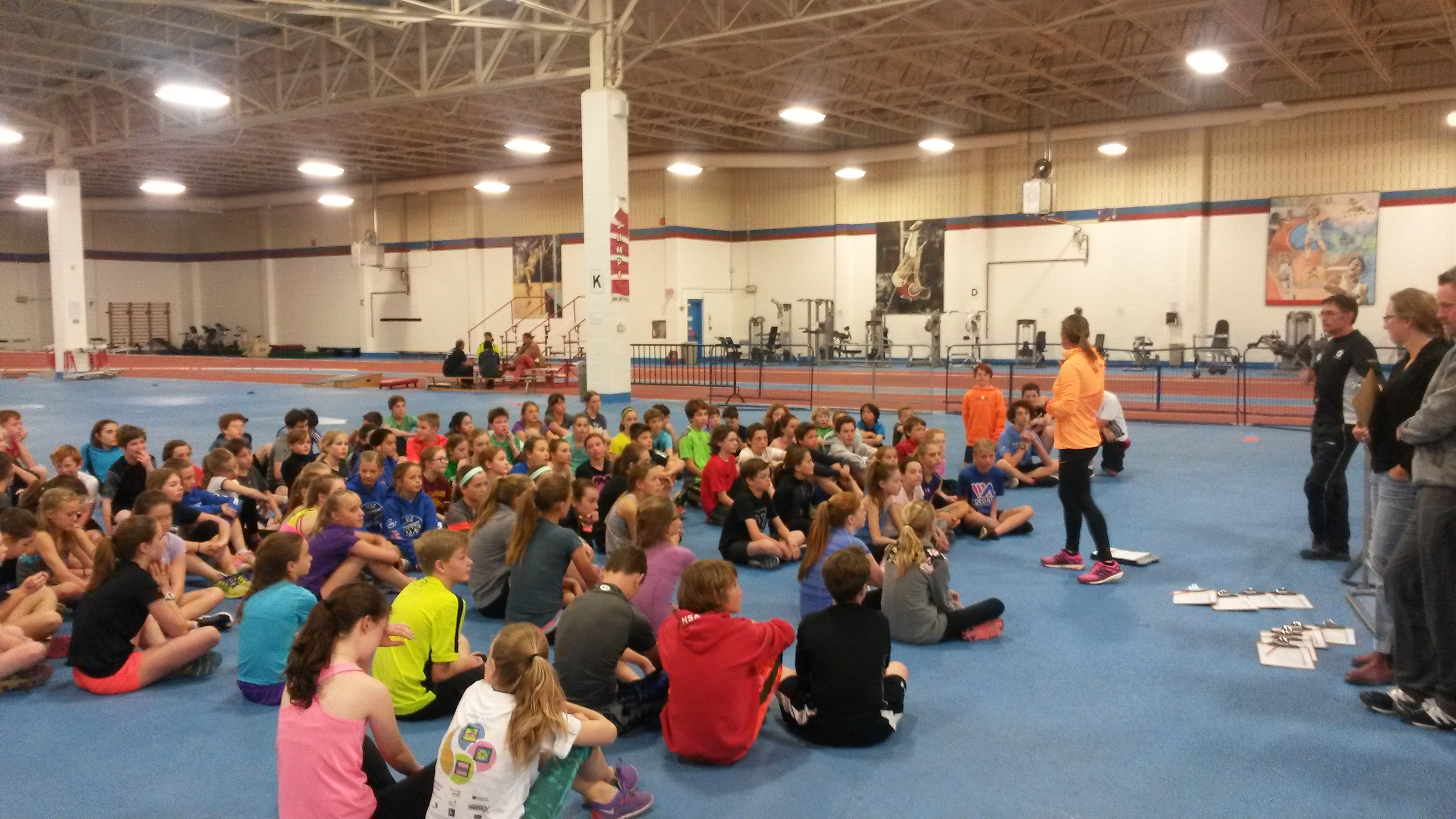
AOA Spring 2016 Fitness Testing Results
Thank you for attending the Spring 2016 AOA Fitness Testing on Sunday May 15th. Results can be found by clicking here.
Please note that Fall Fitness Testing will take place at the Toronto Track and Field Centre, York University, Saturday October 1st, 2016. Please add this date to your calendar for fall planning. All athlete’s planning on attending the 2017 U14 and U16 Provincial Championships will be required to submit a fitness test dated between Sept 1-Dec 31 by Dec 31, 2016.
Below are the descriptions of the tests that were performed:
Penta Jump– This repeated double leg horizontal jump requires a considerable amount of lower body coordination and power. This is directly related to explosive speed that you can generate through your hips during a turn. To improve upon this test, a combination of strength and speed (plyometrics) exercises should be done. Here are 3 examples: 1, 2,3. (click the links to watch videos)
Standing Medicine Ball Throw – This test measures power and coordination generated from a bottom up fashion. It requires you to load your legs and trunk and maintain stability before achieving any vigorous movement of the upper body to propel a medicine ball weighing approx. 4% of body weight. To improve upon this test work on explosive type movements. Click on the 2 examples here: 1, 2.
Vertical Jumps– The counter-movement vertical jump incorporates the Central Nervous System to coordinate the segments to create lower body power. This is directly related to explosive speed that you can generate through your legs during a turn. To improve upon this test, a combination of strength and speed/plyometric exercises should be done. The single leg jump ratio should be as close to 1.0 as possible. The further away from 1.0 your score is, the more discrepancy in coordination/ power between right and left legs. If you have one leg significantly weaker you should continue with unilateral strength/ power work (click on these examples 1,2,3) to balance this out and always start your sets with the weaker side.
Hex Rail – The hex rail measures agility or the ability to change directions quickly. Primarily focused on the lower body and core muscles, the hex rail displays anaerobic power and shadows the quick multi-directional movements used in many sports. The hex rail is done 2-3x around (depending on age) in a clockwise direction followed by a brief rest then 2-3x counterclockwise. To improve on speed and agility, work on quick feet drills like cone high knees, Lateral Shuffles and slalom runs.
Movement Screens – Movement Screen 1 is an Overhead squat movement with a dowel. If technique was perfect a score of 3/3 was recorded. If technique broke down slightly then a score of 2/3 was awarded. If there were major alignment issues (lack of ankle mobility or knee stability to ensure safe ski racing) then a score of less than 2 was awarded. If there was pain during any part of the movement then a score of 0 was recorded. If a score of less than 2 was received it is recommended that you follow up with a sports therapist (sports med doctors, athletic therapist, physiotherapist, exercise physiologist, etc.) to have an alignment check performed to rule out any further red flags and to start some correctives to ensure safety this upcoming ski season.
Movement Screen2 was a straight leg raise performed to assess posterior chain (calf, hamstring, back) range of motion. If a score of below 2 was noted then the following corrective should be performed daily 10-20 times pain free. If a score of 0 was given then follow up with a health professional is needed.
60/ 90–second Box Jump– This test measures the anaerobic endurance of the lower body muscles by recording the number of jumps on a 10-40cm box (age dependent) as the test progresses. This is one of the major energy systems responsible for success in ski racing. We are looking at overall number of touches over the 60/90 seconds (age dependent). Track and field, Cross country running, mountain biking, fartlek and intervals will help build efficiency in this system.
Australian Institute Shuttle test (AIS) – The ‘beep’ test is an aerobic (endurance) test that measures the athletes’ ability to take in and utilize oxygen and provides an indirect VO2 measurement. A high VO2 allows the athlete to train and compete at higher intensities for longer periods of time as well as recover quicker between races and training days. Mountain biking and cross country are two good ways to increase your V02.
The tests were selected based on the key physical parameters required to both perform and maintain safety throughout the ski season. These are all activities that can be easily reproduced for re-testing purposes and require very little equipment to do so.